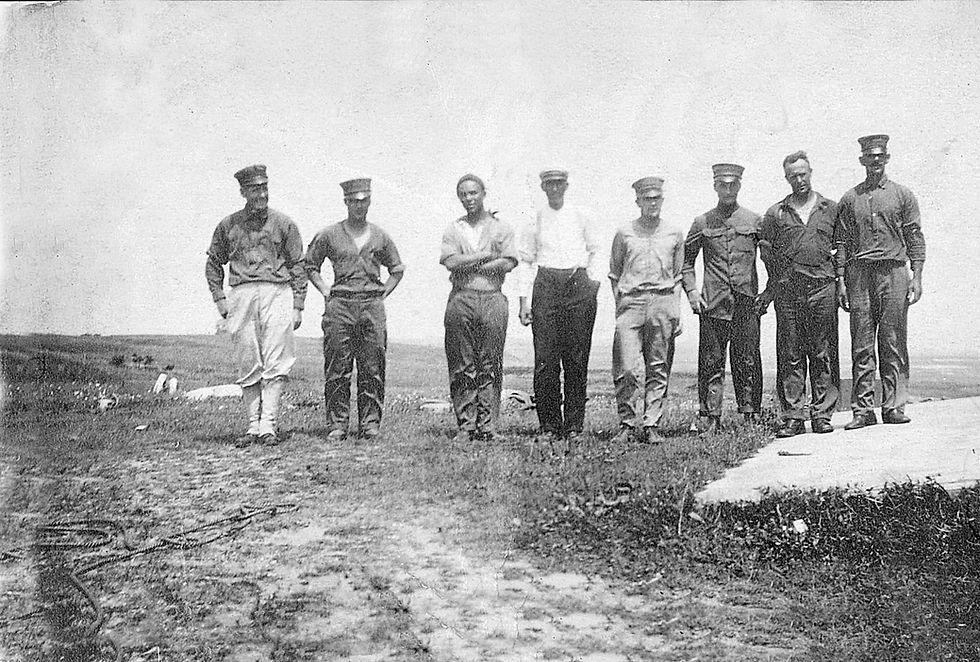The Lifesavers of Nauset Beach
- Regan Murray
- Jun 23, 2018
- 3 min read
An article from our summer intern, originally published in the Cape Cod Chronicle
To the summer visitor, the beaches of Cape Cod beckon with the promise of leisure. However, the sandy vistas and gleaming waters of the Outer Cape also harbor the disastrous history of over three thousand shipwrecks.
During the first two centuries of New World exploration and settlement, such wrecks often proved fatal. Survivors who reached shore encountered only a desolate beach, often dying of starvation and exposure. By 1789, the Humane Society of the Commonwealth of Massachusetts decided to address this issue by establishing seven unmanned huts to provide food, warmth, and refuge to wreck survivors. Additionally, the huts housed rescue equipment for use by volunteer rescuers, known as “beach combers."

As the huts proved insufficient to address the treachery of Cape coastal travel, the federal government gradually involved itself in the humanitarian effort, establishing the United States Life-Saving Service (USLSS) in 1848. In 1872, Sumner Kimball, the Chief of the Treasury Department’s Revenue Division (and a former Orleans schoolteacher), greatly expanded the capacity of the service by replacing the unmanned shelters with the first federally-funded life-saving stations operated by crews of salaried surfmen. Between 1872 and 1874, the Service constructed nine stations on the Cape, including the Orleans Life-Saving Station #12 on Pochet Island.

In 1915, an act of Congress created the United States Coast Guard. As a result of the establishment of the Coast Guard, the surfmen of the Orleans Station, renamed Coast Guard Station #40, became military personnel. Additionally, they received new military technology, including Navy radio stations and the first motor lifeboat, the forerunner of the CG36500. Rebuilt in 1933 with Public Works Administration funds, the station operated as part of the USCG until 1947. Beginning in 1954, the General Service Administration ran the station, before turning it over to the National Parks Service in 1970.

Six to seven trained and salaried surfmen, chosen based on their seafaring experience and physical condition, staffed each life-saving station, in addition to a keeper and a captain. The keeper lived in the station year-round, while the surfmen reported for ten months of service on August 1st of each year. This period of service spanned the winter months, during which time shipwrecks proved most prevalent and most deadly. During the active season, surfmen received on day off a week, from sunrise to sunset, to return home.

Due to demanding hours of the surfmen, which required their near-constant presence at the station and on the surrounding beaches, stations operated in conditions of relative insularity and self-reliance. The surfmen shared a bunkroom sparsely furnished with extra bunks for wreck survivors, a coal stove, kerosine lanterns (not replaced with electric lights until 1933), several washbasins (though no toilet), and a few chairs. They shared the task of cooking, and a surfman’s “cook week” marked one of the few occasions during which he received a visit from family, as his wife received permission to assist him in the food preparation. The centrality of food and camaraderie in weathering the arduous season and occupation secured the messroom’s status as the station’s hub.
Despite each station featuring a lookout tower, frequent periods of low visibility necessitated on-foot beach patrols. From Pochet Island, an Orleans surfman tasked with the southward patrol walked two-and-a-half miles south to meet a Chatham surfman at a hut halfway between the two stations. The two men exchanged tokens as proof of a completed patrol before turning back. An Orleans surfman patrolling northward traversed two-and-a-half miles to a post at the edge of Nauset Harbor, halfway between the Orleans and Eastham stations. He used a key attached to a post to wind his watch to evidence a successful patrol before embarking on the return trip. On his patrols, a surfman carried a red Coston signal which he would fire upon sighting a wreck to alert the crew that they had been spotted and assistance had been summoned via telephones kept in the halfway huts.

Time has largely rendered knowledge of these early life-savers esoteric, though their brave efforts not only led to the rescue of many unfortunate seafarers in their own time, but bear a lasting heroic impact through the endeavors of their progeny in the modern Coast Guard.























